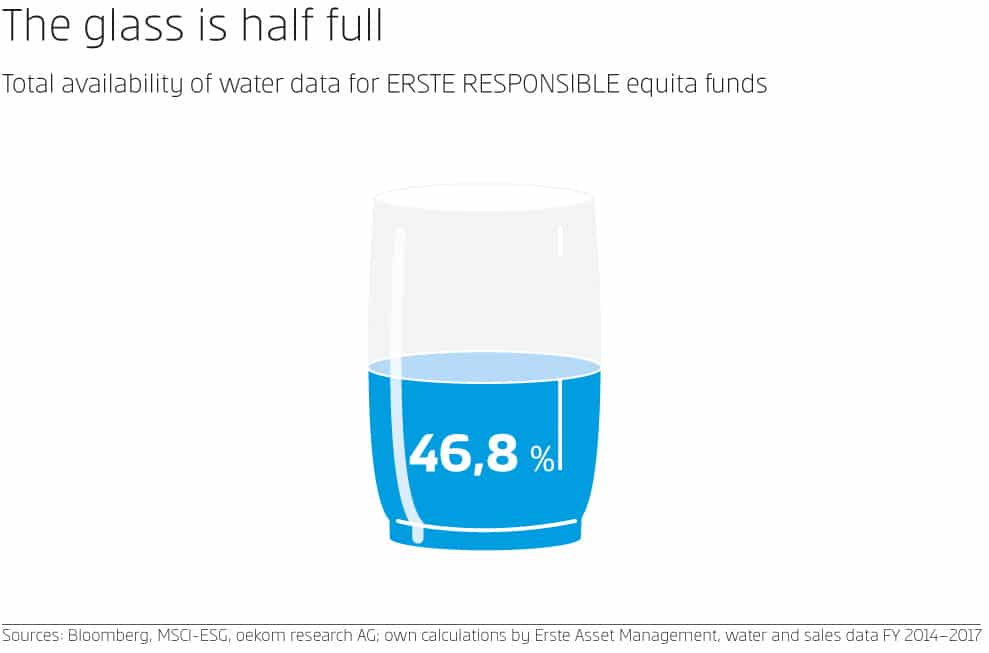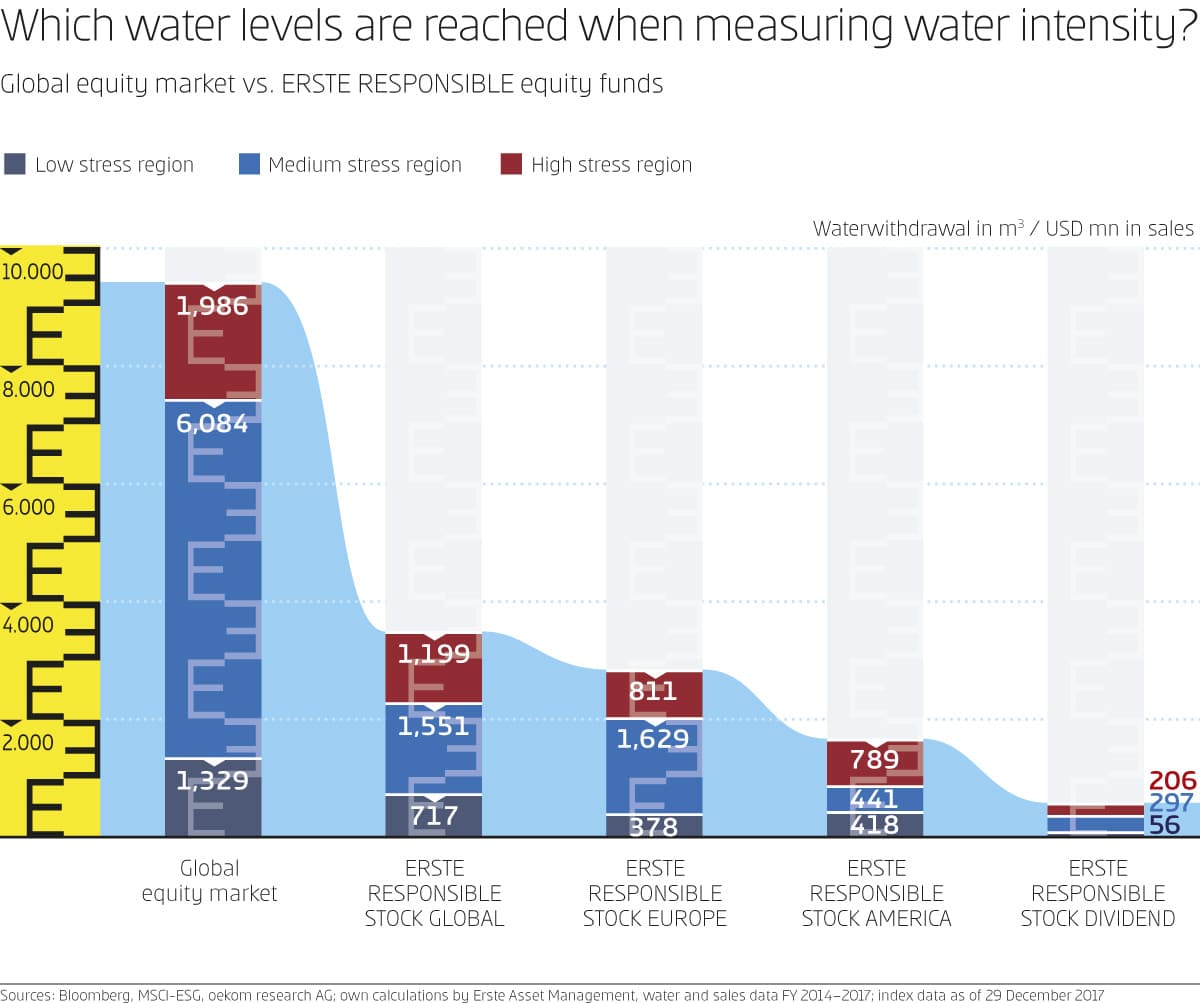The World Water Day was first introduced on 22 March 1993. The goal was to anchor the meaning of water and thus the efficient use of this critical resource in the collective consciousness. Despite the long history, the importance of water from the point of view of risk has only recently gained in relevance.
Drought, poverty, and flight
Clean drinking water is a dwindling good. The World Economic Forum rates a global water crisis as fifth-biggest risk for the coming years. Local freshwater shortage is a risk with social consequences. Water shortage can make entire regions uninhabitable and force people to flee. Access to water is thus becoming more and more important on a global scale.
According to the World Resources Institute, every seventh person today lives in a region with scarce water resources. By 2025, this number could increase to 3.5bn, i.e. to almost half the world’s population. Pollution and the resulting threat to freshwater springs is one of the most frequent reasons for water shortages.
Pioneering work in the field of water footprints
The models that facilitate the establishment of the water footprint uses the volume of water used and reported by companies as input variable for the calculation of water intensity. In order to ensure a reliable set of data, we take into account only those data that have been supplied by several providers. Data available for less than 80% of relevant business activity are not used in the model.
Even though our water data currently only cover about half of our equity holdings, it is important for us to promote the availability of reliable water data. We achieve this goal on the one hand by publishing the water footprint itself, and on the other hand by entering into an intensive dialogue with our research partners.

Location, location, location
Whereas every tonne of CO2 emitted or saved makes a global difference, water shortage is a local problem. The relevant unit is therefore every regionally confined water catchment area. The water footprint sorts the regions of business activities in terms of water stress level from low to high. The higher the stress level, the higher the water risk.
For example, fruit cultivation in the Austrian region of Wachau (Lower Austria) is safe, whereas in the dry regions of California it is problematic. Water consumption first has to be allocated to the region where the company operates in order to assess the risk of water shortage.
Regional Distribution of water intensity of the ERSTE RESPONSIBLE equity funds
For the ERSTE RESPONSIBLE funds, the establishment of water risk represent an important part of sustainable company (e)valuation. To this end, the regional operations of the company, the dependence on water use, and the measures aimed at improving sustainable water consumption are taken into consideration. For example, the water intensity of our flagship fund ERSTE RESPONSIBLE STOCK GLOBAL is only 37% of that exhibited by the global equity index.


Legal note:
Prognoses are no reliable indicator for future performance.
Legal disclaimer
This document is an advertisement. Unless indicated otherwise, source: Erste Asset Management GmbH. The language of communication of the sales offices is German and the languages of communication of the Management Company also include English.
The prospectus for UCITS funds (including any amendments) is prepared and published in accordance with the provisions of the InvFG 2011 as amended. Information for Investors pursuant to § 21 AIFMG is prepared for the alternative investment funds (AIF) administered by Erste Asset Management GmbH pursuant to the provisions of the AIFMG in conjunction with the InvFG 2011.
The currently valid versions of the prospectus, the Information for Investors pursuant to § 21 AIFMG, and the key information document can be found on the website www.erste-am.com under “Mandatory publications” and can be obtained free of charge by interested investors at the offices of the Management Company and at the offices of the depositary bank. The exact date of the most recent publication of the prospectus, the languages in which the fund prospectus or the Information for Investors pursuant to Art 21 AIFMG and the key information document are available, and any other locations where the documents can be obtained are indicated on the website www.erste-am.com. A summary of the investor rights is available in German and English on the website www.erste-am.com/investor-rights and can also be obtained from the Management Company.
The Management Company can decide to suspend the provisions it has taken for the sale of unit certificates in other countries in accordance with the regulatory requirements.
Note: You are about to purchase a product that may be difficult to understand. We recommend that you read the indicated fund documents before making an investment decision. In addition to the locations listed above, you can obtain these documents free of charge at the offices of the referring Sparkassen bank and the offices of Erste Bank der oesterreichischen Sparkassen AG. You can also access these documents electronically at www.erste-am.com.
Our analyses and conclusions are general in nature and do not take into account the individual characteristics of our investors in terms of earnings, taxation, experience and knowledge, investment objective, financial position, capacity for loss, and risk tolerance. Past performance is not a reliable indicator of the future performance of a fund.
Please note: Investments in securities entail risks in addition to the opportunities presented here. The value of units and their earnings can rise and fall. Changes in exchange rates can also have a positive or negative effect on the value of an investment. For this reason, you may receive less than your originally invested amount when you redeem your units. Persons who are interested in purchasing units in investment funds are advised to read the current fund prospectus(es) and the Information for Investors pursuant to § 21 AIFMG, especially the risk notices they contain, before making an investment decision. If the fund currency is different than the investor’s home currency, changes in the relevant exchange rate can positively or negatively influence the value of the investment and the amount of the costs associated with the fund in the home currency.
We are not permitted to directly or indirectly offer, sell, transfer, or deliver this financial product to natural or legal persons whose place of residence or domicile is located in a country where this is legally prohibited. In this case, we may not provide any product information, either.
Please consult the corresponding information in the fund prospectus and the Information for Investors pursuant to § 21 AIFMG for restrictions on the sale of the fund to American or Russian citizens.
It is expressly noted that this communication does not provide any investment recommendations, but only expresses our current market assessment. Thus, this communication is not a substitute for investment advice.
This document does not represent a sales activity of the Management Company and therefore may not be construed as an offer for the purchase or sale of financial or investment instruments.
Erste Asset Management GmbH is affiliated with the Erste Bank and austrian Sparkassen banks.
Please also read the “Information about us and our securities services” published by your bank.

